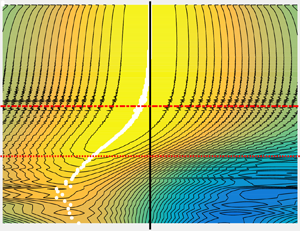Article contents
Slow spectral transfer and energy cascades in isotropic turbulence
Published online by Cambridge University Press: 07 December 2020
Abstract

A database of highly resolved direct numerical simulations of three-dimensional isotropic turbulence, with Taylor microscale Reynolds numbers ranging from  ${\approx }3$ to 400, and grid sizes up to
${\approx }3$ to 400, and grid sizes up to  $2048^3$, is used to analyse the temporal behaviours of spectral transfer and energy that result from low-wavenumber forcing. The temporal behaviours of the energy and energy transfer spectra are analysed using single-time and time-delay statistics. Results show that the energy transfer across a given wavenumber in the inertial range fluctuates by an order of magnitude around its temporal average, and only slow fluctuations have the property of being unidirectional, consistent with classical cascade concepts. All small scales, roughly beyond
$2048^3$, is used to analyse the temporal behaviours of spectral transfer and energy that result from low-wavenumber forcing. The temporal behaviours of the energy and energy transfer spectra are analysed using single-time and time-delay statistics. Results show that the energy transfer across a given wavenumber in the inertial range fluctuates by an order of magnitude around its temporal average, and only slow fluctuations have the property of being unidirectional, consistent with classical cascade concepts. All small scales, roughly beyond  $k\eta > 0.3$, respond essentially instantly to changes at the large scale.
$k\eta > 0.3$, respond essentially instantly to changes at the large scale.
JFM classification
- Type
- JFM Papers
- Information
- Copyright
- © The Author(s), 2020. Published by Cambridge University Press
References
REFERENCES
- 5
- Cited by



